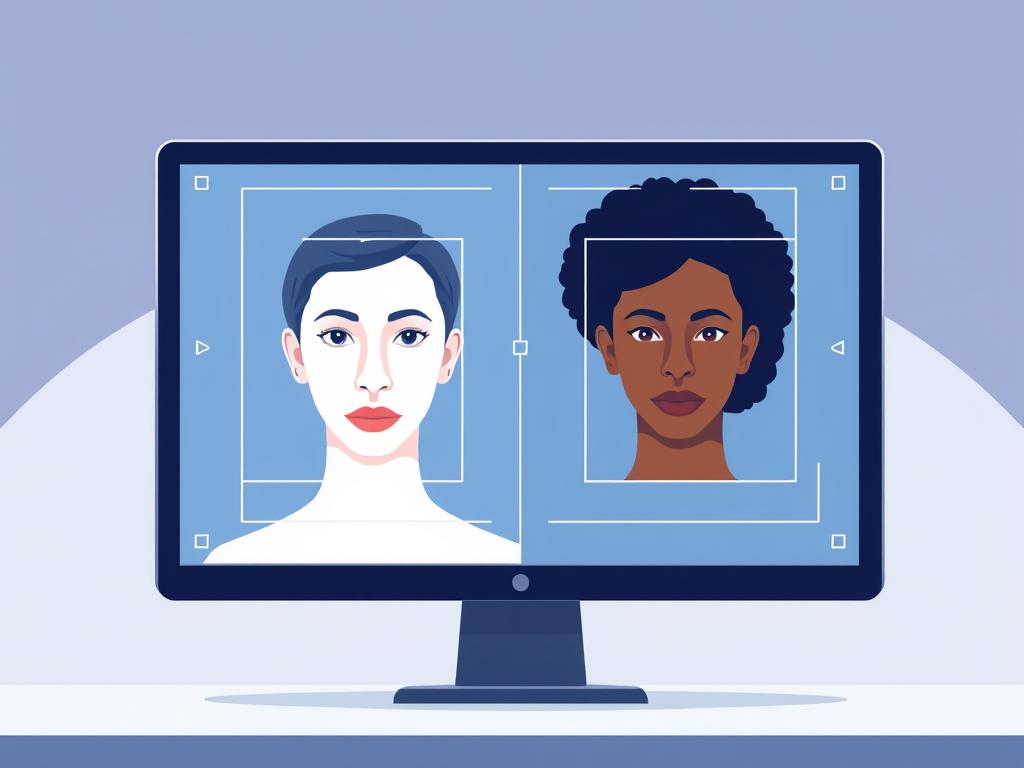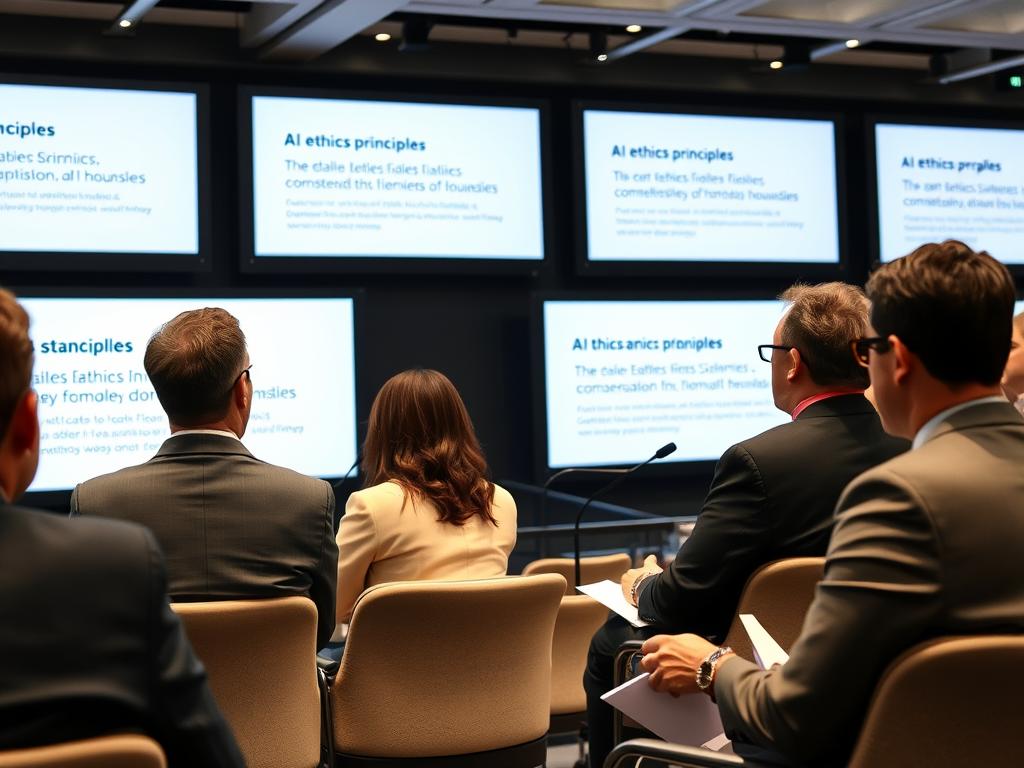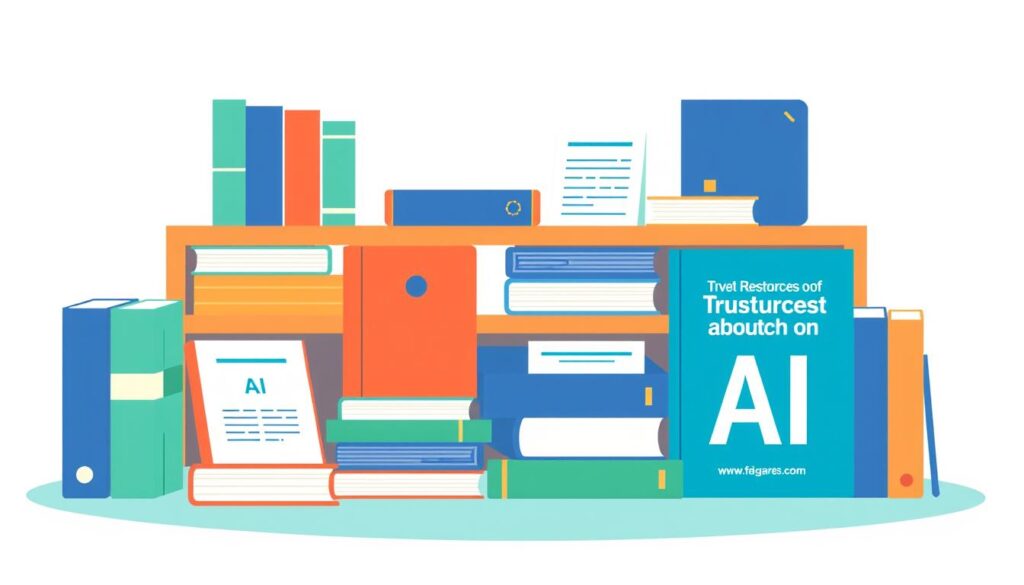In early 2023, an AI-generated image of Pope Francis wearing a stylish white puffer jacket went viral, fooling millions online. Months later, AI-generated robocalls mimicking President Biden’s voice attempted to suppress voter turnout in New Hampshire. These incidents represent just the tip of the iceberg in a growing wave of AI misuse that has shaken public confidence. As artificial intelligence systems become increasingly embedded in our daily lives—from content creation to healthcare diagnostics—the question of trust in AI has never been more critical or complex.
While AI promises revolutionary benefits across industries, recent controversies have spotlighted serious concerns about reliability, ethics, and accountability. This tension between AI’s potential and its pitfalls has created a trust paradox that individuals, organizations, and governments worldwide are struggling to navigate. This article examines the current state of public trust in AI, explores the factors eroding that trust, and offers a balanced perspective on how we might build a future where AI systems deserve our confidence.
The Current State of Trust in AI: What Public Opinion Tells Us
Public opinion surveys reveal significant variations in trust levels across demographics and regions
Recent global surveys paint a nuanced picture of how the public views artificial intelligence. According to KPMG’s 2023 global study on trust in AI spanning 17 countries, approximately 61% of people express wariness about trusting AI systems, with only 46% globally willing to place their trust in these technologies. This hesitation crosses geographical boundaries but varies significantly by region and demographic factors.
Interestingly, trust levels show marked differences across countries. People in emerging economies like China and India demonstrate higher trust in AI compared to those in Western nations. The University of Queensland research highlighted in KPMG’s report found that younger individuals, those with university education, and people in managerial positions generally exhibit greater trust in AI technologies—suggesting that familiarity and exposure may influence trust formation.
When examining specific AI applications, public opinion reveals clear preferences. Healthcare applications of AI receive the highest trust ratings, while AI use in human resources decisions faces the most skepticism. This pattern suggests that people are more comfortable with AI augmenting human expertise rather than replacing human judgment in consequential decisions about individuals.
Key Public Opinion Findings:
These statistics reveal a public that recognizes AI’s potential while harboring significant reservations. The gap between perceived benefits and actual trust suggests that addressing trust deficits could unlock greater AI adoption and acceptance. As one Pew Research analyst noted, “The public isn’t categorically rejecting AI—they’re asking for assurances that it will be developed and deployed responsibly.”
Factors Eroding Trust in Artificial Intelligence
The trust deficit in AI stems from several interconnected factors that range from technical limitations to ethical concerns. Understanding these factors is crucial for addressing the root causes of public skepticism.

Algorithmic bias in facial recognition systems has become a prominent example of AI trustworthiness concerns
1. Lack of Transparency and Explainability
The “black box” nature of many AI systems—particularly those using complex neural networks—makes it difficult for users to understand how decisions are reached. This opacity creates fundamental trust issues, especially when AI systems make consequential decisions affecting people’s lives.
Research from MIT shows that users are more likely to trust AI systems when they can understand the reasoning behind AI recommendations. However, the technical complexity of explaining deep learning models creates a significant challenge. As one AI ethics researcher noted, “People don’t trust what they can’t understand, and many AI systems today are fundamentally difficult to interpret, even for their creators.”
“The challenge isn’t just making AI work—it’s making AI work transparently. When systems can’t explain their reasoning, trust becomes the first casualty.”
2. Algorithmic Bias and Fairness Concerns
High-profile cases of AI systems exhibiting bias—from facial recognition technologies that perform poorly on darker skin tones to hiring algorithms that disadvantage women—have significantly damaged public trust. These biases often stem from training data that reflects historical inequities or from flawed algorithmic design.
A 2023 study published in Nature found that 65% of respondents cited concerns about algorithmic bias as a major factor in their distrust of AI systems. The persistence of these issues, despite increased awareness, suggests that technical solutions alone may be insufficient without broader systemic changes in how AI is developed and evaluated.
3. Privacy and Data Security Vulnerabilities

AI systems often require vast amounts of personal data, raising significant privacy concerns
The data-hungry nature of AI systems creates inherent tension with privacy expectations. Many AI applications require access to sensitive personal information to function effectively, yet data breaches and misuse cases have made the public increasingly wary of sharing their information.
According to the KPMG study, 84% of respondents identified cybersecurity risks as their top concern regarding AI. This anxiety is compounded by the potential for AI to enable more sophisticated privacy violations, from deepfakes that can impersonate individuals to surveillance systems that can track and profile people at unprecedented scale.
4. Accountability Gaps
When AI systems fail or cause harm, determining responsibility becomes challenging. The distributed nature of AI development—involving data collectors, algorithm designers, system implementers, and end users—creates accountability gaps that undermine trust.
Research from the University of Queensland found that only one-third of respondents expressed confidence in commercial organizations and governments to develop, use, and govern AI in the public interest. This trust deficit reflects concerns about whether current accountability mechanisms are sufficient to ensure responsible AI development and deployment.
5. Job Displacement and Economic Uncertainty
Fears about AI automating jobs and disrupting livelihoods contribute significantly to trust issues. While economists debate the net employment effects of AI, public anxiety about technological unemployment remains high and colors perceptions of AI trustworthiness.
A 2023 Gallup poll found that 41% of workers worry about their jobs being eliminated due to new technology, automation, or AI. This economic anxiety creates resistance to AI adoption that goes beyond technical or ethical concerns, touching on fundamental questions about AI’s role in shaping future economic opportunities.
Understand the Full Spectrum of AI Trust Challenges
Get our comprehensive guide on “Building Trustworthy AI Systems” to learn how organizations are addressing transparency, bias, privacy, and accountability challenges in AI development.
The Other Side: Benefits and Positive Impact of AI
Despite legitimate concerns, artificial intelligence continues to demonstrate remarkable potential for positive impact across numerous domains. A balanced assessment of trust in AI must acknowledge these benefits alongside the challenges.

AI diagnostic tools are helping medical professionals detect diseases earlier and with greater accuracy
Healthcare Advancements
AI is transforming healthcare through improved diagnostics, personalized treatment plans, and accelerated drug discovery. Machine learning algorithms can now detect certain cancers from medical images with accuracy rivaling or exceeding that of experienced radiologists. During the COVID-19 pandemic, AI tools helped analyze vast datasets to identify potential treatments and vaccine candidates at unprecedented speed.
A 2023 study in the New England Journal of Medicine found that AI-assisted diagnosis reduced diagnostic errors by 31% in complex cases. These tangible benefits explain why healthcare applications of AI consistently receive higher trust ratings in public opinion surveys.
Environmental Solutions

AI systems are helping optimize renewable energy production and distribution
In addressing climate change and environmental challenges, AI offers powerful tools for monitoring, modeling, and optimization. From smart grids that maximize renewable energy efficiency to predictive models that improve natural disaster response, AI applications are contributing to sustainability efforts worldwide.
Google’s DeepMind demonstrated this potential by reducing energy consumption in data centers by 40% through AI optimization. Similarly, Microsoft’s AI for Earth program has supported dozens of projects using AI to monitor biodiversity, track deforestation, and predict climate impacts.
Accessibility and Inclusion
AI technologies are breaking down barriers for people with disabilities and expanding access to services. Speech recognition, real-time translation, and computer vision technologies are enabling new forms of communication and interaction for diverse populations.
For example, Microsoft’s Seeing AI app helps visually impaired users navigate their environment and access written information. Google’s Live Transcribe provides real-time transcription for deaf and hard-of-hearing users. These applications demonstrate how AI can enhance human capabilities and promote inclusion when developed with accessibility in mind.
“When designed responsibly, AI can be one of our most powerful tools for solving humanity’s greatest challenges. The question isn’t whether we should use AI, but how we ensure it benefits everyone.”
Scientific Discovery and Innovation
AI is accelerating scientific research across disciplines, from protein folding prediction to materials science. DeepMind’s AlphaFold system revolutionized the field of structural biology by solving the protein folding problem, potentially accelerating drug discovery and our understanding of diseases.
These scientific applications highlight AI’s potential as a tool for expanding human knowledge and capabilities rather than simply automating existing processes. As one researcher noted, “AI isn’t just doing what humans do faster—it’s helping us see patterns and possibilities we might never have discovered on our own.”
The Future of AI Adoption: Expert Insights and Regulatory Frameworks

Regulatory approaches to AI vary significantly across regions, with the EU taking the lead on comprehensive frameworks
As AI technologies continue to evolve, their adoption trajectory will be shaped by both technical advancements and social factors. Experts predict several key trends that will influence the future landscape of trust in AI.
Emerging Regulatory Frameworks
Governments worldwide are developing regulatory frameworks to address AI risks while fostering innovation. The European Union’s AI Act represents the most comprehensive approach, categorizing AI applications by risk level and imposing stricter requirements on high-risk systems that could impact safety or fundamental rights.
In the United States, President Biden’s 2023 Executive Order on “Safe, Secure, and Trustworthy AI” established new standards for AI safety and security while directing agencies to develop sector-specific guidelines. China’s approach emphasizes both innovation and control, with particular focus on applications that could affect social stability.
These regulatory efforts reflect growing consensus that some form of oversight is necessary, though approaches differ significantly. As one policy expert noted, “We’re seeing a global experiment in AI governance, with different regions emphasizing different values and concerns.”
Industry Self-Regulation and Standards

Industry-led initiatives are developing standards and best practices for responsible AI
Alongside government regulation, industry-led initiatives are establishing voluntary standards and best practices. The Partnership on AI, which includes major tech companies and research organizations, has developed guidelines for responsible AI development. Similarly, the IEEE Global Initiative on Ethics of Autonomous and Intelligent Systems has created standards addressing transparency, accountability, and bias.
These self-regulatory efforts aim to establish common expectations for AI systems while allowing for continued innovation. However, critics question whether voluntary standards alone can adequately address trust concerns without the force of law behind them.
Expert Predictions on AI Adoption
AI experts offer varying predictions about how trust issues will influence adoption patterns. Dr. Kai-Fu Lee, a prominent AI investor and former executive at Google and Microsoft, predicts that AI adoption will proceed unevenly across sectors, with applications that augment rather than replace human judgment seeing faster acceptance.
Others, like AI ethics researcher Timnit Gebru, emphasize that meaningful adoption requires addressing structural issues of power and representation in AI development. “The question isn’t just whether people will use AI,” Gebru notes, “but whether AI will be developed in ways that serve diverse communities equitably.”
Factors Accelerating Adoption
Factors Slowing Adoption
The consensus among experts suggests that AI adoption will continue to accelerate but with increasing emphasis on responsible development practices. As Stanford’s 2023 AI Index Report notes, “We’re seeing a shift from ‘AI at all costs’ to ‘AI done right,’ with organizations recognizing that sustainable adoption requires earning and maintaining trust.”
Stay Informed on AI Ethics and Regulation
Subscribe to our monthly newsletter for updates on AI ethics developments, regulatory changes, and best practices for responsible AI implementation.
Rebuilding Trust: Actionable Steps Toward Trustworthy AI
Addressing the trust deficit in AI requires concerted effort from multiple stakeholders. Based on research and expert recommendations, several approaches show promise for building AI systems worthy of public confidence.

Building trustworthy AI requires diverse teams implementing ethical principles throughout the development lifecycle
Transparency and Explainability Initiatives
Making AI systems more transparent and explainable represents a fundamental step toward building trust. This includes developing techniques that can explain AI decisions in human-understandable terms and providing appropriate documentation about system capabilities and limitations.
DARPA’s Explainable AI (XAI) program has funded research into methods for making complex AI systems more interpretable. Meanwhile, companies like IBM have developed toolkits that help developers implement explainability features in their AI applications. These efforts aim to transform AI from inscrutable black boxes into systems whose reasoning can be examined and evaluated.
Ethical AI Certification Programs

Certification programs are emerging to verify AI systems against ethical standards
Certification programs that verify AI systems against ethical standards are emerging as a mechanism for signaling trustworthiness. The Ethics Certification Program for Autonomous and Intelligent Systems (ECPAIS) and similar initiatives aim to provide independent verification that AI systems meet specific criteria for responsible development.
These programs typically evaluate factors such as fairness, transparency, privacy protection, and security. By providing a recognizable certification, they help users identify systems that have undergone rigorous ethical review, similar to how energy efficiency ratings help consumers make informed choices about appliances.
Inclusive Development Practices
Diverse development teams and inclusive design practices help ensure AI systems work well for all users. Research consistently shows that homogeneous teams are more likely to overlook potential problems that affect underrepresented groups.
Organizations like Black in AI, Women in Machine Learning, and the Algorithmic Justice League are working to increase diversity in the AI field and promote inclusive development practices. These efforts address trust issues at their source by ensuring that diverse perspectives inform AI design from the beginning rather than as an afterthought.
Public Education and AI Literacy

Improving AI literacy helps the public make informed decisions about AI technologies
Improving public understanding of AI capabilities and limitations is crucial for building appropriate trust. The KPMG study found that 85% of people want to learn more about AI, indicating significant appetite for educational resources.
Organizations like AI4K12 are developing guidelines for AI education in schools, while platforms like Elements of AI offer free online courses for adults. These initiatives aim to demystify AI technology and empower people to make informed decisions about when and how to trust AI systems.
Robust Governance Frameworks
Effective governance frameworks provide accountability and oversight throughout the AI lifecycle. These frameworks typically include risk assessment processes, monitoring mechanisms, and clear lines of responsibility for addressing problems that arise.
The National Institute of Standards and Technology (NIST) AI Risk Management Framework offers guidance for organizations developing and deploying AI systems. Similarly, Canada’s Algorithmic Impact Assessment tool helps government agencies evaluate the potential impacts of automated decision systems before implementation.
“Trust in AI isn’t something you can retrofit after development—it needs to be designed in from the beginning through governance structures that prioritize human values and well-being.”
These governance approaches recognize that trust in AI requires ongoing attention rather than one-time solutions. As AI systems evolve and are applied in new contexts, governance frameworks provide mechanisms for continuous evaluation and improvement.
Conclusion: Navigating the Future of Trust in AI

Building a future of trustworthy AI requires balancing innovation with responsible development practices
The question “Can you still trust AI?” has no simple answer. Trust in artificial intelligence is neither categorically warranted nor categorically misplaced—it depends on specific systems, contexts, and governance structures. What’s clear is that realizing AI’s potential benefits while minimizing risks requires addressing the legitimate concerns that have eroded public confidence.
The path forward involves technical innovations that make AI more transparent and fair, regulatory frameworks that provide appropriate oversight without stifling innovation, and educational initiatives that empower people to engage with AI technologies from an informed perspective. Most importantly, it requires recognizing that trust is earned through consistent demonstration of competence, reliability, and alignment with human values.
As we navigate this complex landscape, maintaining a balanced perspective is essential. Neither uncritical enthusiasm nor categorical rejection of AI serves society well. Instead, we need nuanced approaches that acknowledge both AI’s remarkable potential and the legitimate concerns about its development and deployment.
The future of AI will be shaped not just by technical capabilities but by the social, ethical, and governance choices we make. By prioritizing trustworthy development practices and meaningful human oversight, we can work toward AI systems that deserve our confidence—not because they’re perfect, but because they’re developed and deployed in ways that respect human autonomy, promote well-being, and advance justice.
Take Action for Responsible AI
Download our comprehensive guide “Building Trust in AI: A Practical Framework” to learn how organizations and individuals can contribute to more trustworthy AI development and deployment.
Additional Resources on Trust in AI
Research Reports
Educational Resources
Organizations & Initiatives

A growing ecosystem of resources is available to help navigate the complex landscape of AI trust and ethics







